In this NewsFlash, we discover the new potential vaccine against TB, hear the story of the comet that never was and a way to replace the gold in electrical contacts. Plus, we celebrate with the winner of this year's Rolls Royce Science Prize!
In this episode
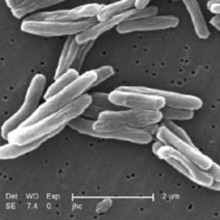
00:20 - New Vaccine Could Protect Against Resistant TB
New Vaccine Could Protect Against Resistant TB
A new vaccine against tuberculosis could not only boost the effectiveness of the existing childhood BCG vaccine, but could also offer protection against multidrug-resistant forms of the disease.
TB is a global problem, with the World Health Organisation estimating that almost 1 billion people will be infected by 2020. Multidrug-resistant strains of the bacteria are also becoming an increasing problem.

Scale bar, 20 micrometers. See figure 5 in the manuscript for more information.
Image courtesy of Science/AAAS (c) Image courtesy of Science/AAAS' alt='New TB vaccine shows promise' >The standard vaccine, the bacillus Calmette-Guérin or BCG that most of us will have had at some point, is very good at protecting against severe disease in children, but actually offers little protection for adults. Attempts to boost the immunity by re-administering the BCG have not been successful, so any new vaccine would have to boost this immunity, as well as offer protection against drug resistant strains.
This new vaccine, which has been tested and found to be effective in a range of animals, consists of four proteins joined together along with a chemical known as an adjuvant, which helps to create an immune response. Each of these proteins has been shown to give partial protection against TB on their own but as there are so many different strains of TB out there, no single protein is enough for a vaccine. By combining proteins into one super-molecule, the vaccine offers protection against a range of different strains of Mycobacterium tuberculosis, the bacterium responsible for TB, including a strain known to be resistant to multiple drugs.
In guinea pigs that had previously been immunised with a short-term BCG, the new vaccine not only offered its own protection, but also stimulated the release of immune components that were originally activated by the BCG. This makes it a good candidate for boosting immunity from the BCG, which has been given to millions of people worldwide since its first use in humans back in 1921.
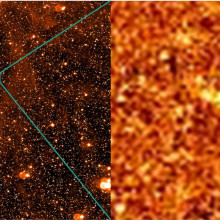
02:13 - The Comet that Never Was
The Comet that Never Was
In a case of cosmic forensics that could rival even an episode of CSI, scientists have pinpointed a moment 18 months previously when two asteroids collided.
In January 2010, the LINEAR (Lincoln Near Earth Asteroid Research) study, which is a robotic scan of the sky, picked up a strange object in the asteroid belt out beyond Mars. Dubbed P/2010 A2, it had a long comet-like tail but, oddly, no central nucleus (body). And, orbiting as it does amongst the asteroid belt, it's also in the wrong place and moving the wrong way to fit the classical cometary description.
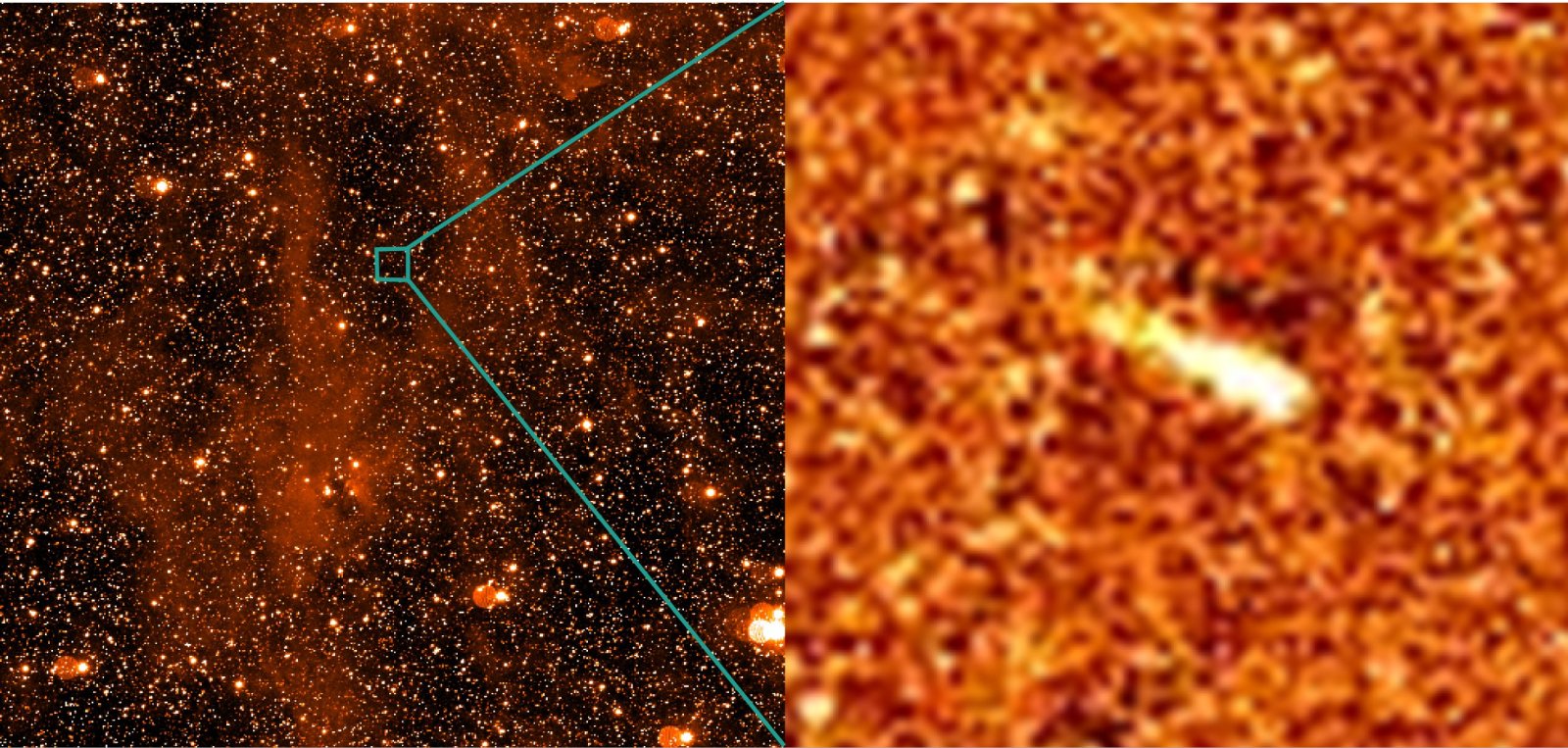 However, the mystery has now been solved in two stunning papers presented this week in the journal Nature. In one, University of California Los Angeles astronomer David Jewitt and his colleagues describe the results of turning the Hubble space telescope on the odd object, whilst the second paper, by Max Planck Institute for Solar System Reserach scientist Colin Snodgrass, provides an off-world perspective by imaging P/2010 A2 from outer space using the Rosetta probe. By comparing these two views it's possible to reconstruct the shape and distribution of the tail and of the object itself.
However, the mystery has now been solved in two stunning papers presented this week in the journal Nature. In one, University of California Los Angeles astronomer David Jewitt and his colleagues describe the results of turning the Hubble space telescope on the odd object, whilst the second paper, by Max Planck Institute for Solar System Reserach scientist Colin Snodgrass, provides an off-world perspective by imaging P/2010 A2 from outer space using the Rosetta probe. By comparing these two views it's possible to reconstruct the shape and distribution of the tail and of the object itself.
What this reveals is that the object is about 120 metres across and streaming in its wake is a dusty cloud 200,000 km long and made of gravel particles measuring millimetres to centimetres across. This confirms a case of mistaken cosmic identity, because P/2010 A2 isn't a comet at all but an asteroid that has experienced a recent close encounter with another of its own kind, a smaller 3-5m diameter asteroid travelling several miles per second in the opposite direction!
Under the influence of light from the Sun, the team have found, the tail is spreading out, with the smaller particles being pushed further than the heavier ones. By measuring how far the particles have moved, it's therefore possible to wind back the cosmic clock to pinpoint exactly when the collision between the two objects must have taken place.
Incredibly, unlike most of the collisions in the asteroid belt, which we tend to this of as happening millions of year ago, this shows that the impact occurred on February 10th 2009, give or take a week!
These observations are important because we need to know where the dust in the Solar System comes from, including how much of it originates from colliding asteroids rather than outgassing comets. According to David Jewitt, "we can also apply this knowledge to the dusty debris discs around other stars, because these are thought to be produced by collisions between unseen bodies in the discs. Knowing how the dust was produced will yield clues about those invisible bodies..."
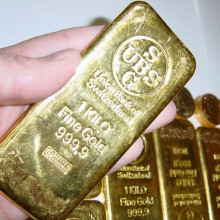
06:05 - All that Contacts doesn't need to be Gold
All that Contacts doesn't need to be Gold
More and more of our lives is becoming dependent on electronics, and that electronics is dependent on wires and cables...
A cable needs a plug and producing a good contact on a plug is quite challenging. The problem is that you want to make a connector out of a metal which is strong, conductive and resistant to wear, and of course cheap, however all the metals that fulfil these constraints, like copper, brass, etc. will oxidise in air. This wouldn't be a problem in itself, but the oxides are insulating, so you cover your nice conducting contact with an insulating layer. The standard solution to this problem is to cover the contact in a thin layer of a noble metal which doesn't oxidise like gold. The problem is of course that gold is very rare and so its expensive, and because of historical reasons it is used as a secure investment when markets are feeling insecure, so at the moment it is even more expensive than usual.
Whilst it is not possible to stop cheap base metals corroding and oxidising, Mark Aindow and colleges at the university of Connecticut have been approaching the problem from the opposite direction. They have been trying to make the oxide more conductive so it doesn't matter. They have been using a variety approaches, to do this, alloying the original metal with one that has a conductive oxide so there are some scales of conductive oxide on the surface, and they have been adding metals to the alloy which effectively dope the oxide, adding or removing electrons allowing current to flow.
The results are promising, they have increased the conductivity of copper contacts by a factor of 3 by adding lanthanum, Iron by a factor of over 200 by adding Vanadium and adding ruthenium to nickel improves it by a factor of about 300, so that the contact resistance only gets 20-30 times worse after a thousand hours in an oxidising atmosphere, rather than over 10000 times worse.
They are very encouraged by this result as they are only using a few 2 metal alloys, and expect further improvements with more work. This approach has the other advantage that there is no problem with the surface coating rubbing off, so in the future cables might not have to be gold plated - though I am not sure it will stop the HiFi cable manufacturers.

08:44 - Cold Gas Fed Early Galaxies
Cold Gas Fed Early Galaxies
Observations with the Very Large Telescope have shed light on how early galaxies grew, by funnelling cold primordial gas into their core.
Giovanni Cresci, from the Arcetri Astrophysical Observatory, Florence, along with colleagues across Europe, used SINFONI (or Spectrograph for INtegral Field Observations in the Near Infrared) to observe three distant galaxies that formed only 2 billion years after the big bang. Using near-infrared spectroscopy, they were able to map the distribution of elements throughout these galaxies.
 Galaxies are thought to grow through a process of collision and merging - smaller galaxies colliding and becoming one, larger galaxy. However, this doesn't account for all galactic growth. The three galaxies observed in this study showed very regular rotation patterns, as you would only expect to see in galaxies with little or no history of collision.
Galaxies are thought to grow through a process of collision and merging - smaller galaxies colliding and becoming one, larger galaxy. However, this doesn't account for all galactic growth. The three galaxies observed in this study showed very regular rotation patterns, as you would only expect to see in galaxies with little or no history of collision.
These observations were looking for gradients in "metallicity" - the abundance of elements heavier than hydrogen or helium. "Modern" galaxies tend to have high metallicity in their central regions, with fewer heavy elements towards the edges. However, these galaxies showed the opposite gradient - lower metallicity in the central, star forming regions, getting higher towards the edges.
Writing in Nature, the authors argue that this points to the "cold flow" model of galaxy growth, in which cold, primordial gas fresh from the big bang, lacking heavy elements, is funnelled in to the centre of the galaxy, fuelling star formation.
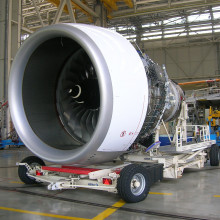
10:20 - The Rolls-Royce Science Prize
The Rolls-Royce Science Prize
Prof. Rick Parker, Vaughan Lewis & Neil Glover, Rolls-Royce, Robert Aspden, Teesdale School
This week, the winner of the Rolls-Royce Annual Science Prize was announced during a special ceremony held at the science museum in London. Chris Smith was there to hear who won...
James Dyson - In 2010, Japan filed 330,000 patents, America 240,000, Britain 17,000. Other countries are now dwarfing our technology output and produce far more engineers than we do.
Chris - The numbers make quite sobering listening, don't they? But the main point that cyclonic vacuum cleaner inventor Sir James Dyson was making during his keynote speech at this year's Rolls-Royce Science Prize Award Ceremony is that if we're to keep British engineering open for business and internationally competitive, then we desperately need to invest in the education and nurturing of the scientists and engineers of tomorrow. It's a view that's shared by many leading industrialists and specialist manufacturers, including Rolls-Royce themselves as the group's director of research and development, Professor Rick Parker explains.
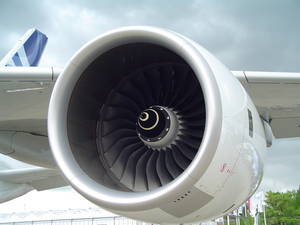 Rick - We're very worried about the quality of science teaching and the enthusiasm for science amongst young people today. They weren't going into science courses, they're often being put off science at a very young age, so there was no chance of them going on to university to do science or engineering because they just haven't done the right subjects in the run up to leaving school.
Rick - We're very worried about the quality of science teaching and the enthusiasm for science amongst young people today. They weren't going into science courses, they're often being put off science at a very young age, so there was no chance of them going on to university to do science or engineering because they just haven't done the right subjects in the run up to leaving school.
Chris - Rick Parker. To tackle this problem, the company have set up a prize, targeting teachers. Vaughan Lewis
Vaughan - The Science Prize is an annual competition we've been running for teachers for the past 6 years. It was launched on our anniversary year and the idea is we asked teachers how they would improve science education in their school or college with £6,000 from Rolls-Royce. We worked through the science learning centre network to get those entries and each year, we get from 1,500 to 2000 schools that put an entry in. From those, the 50 best is selected to win £1,000 as a short list and from that short list, we choose 9 finalist schools, and those schools receive a further £5,000 to go ahead with their project ideas over the following academic year.
Chris - Why did you think there was a need to do this?
Vaughan - At Rolls-Royce, we are very committed to ensuring that the next generation of students coming through will have the right skills, the right understanding, the right knowledge to be able to work in companies such as Rolls Royce. High-tech and high value added companies. So they've got to have an understanding of the basic science behind things, and be enthusiastic about it and want to go on and study at degree level and beyond, so that they can come and work for us, or want to come and work for us through apprenticeships and really get their hands on with real science and engineering.
Chris - It's telling though isn't it, if a company like Rolls-Royce has to start putting together prizes to try and stimulate what many people would argue ought to be going on in schools anyway. That's what schools are for, to try and get people interested in sciences and development so that Britain carries on as a manufacturing nation.
Vaughan - What I say about that is - I mean, the teachers do a great job, there's a lot of very good teachers out there, encouraging a lot of students to do this, but what we were trying to do with this money is allow them to do something above and beyond what they normally do. And so, with £6,000, if you are in a primary school, that's a lot of money. Our winners last year was a primary school and they received a further £15,000 pounds from us and so they received £21,000 pounds from us. We spoke to the science coordinator of that school. His budget for the whole school was £700 for the following year. So, we're able, through what we are doing is just to give them a big boost and allow them to do more than they would do, just to really raise the profile of science and engineering in the school and make it fundamental to what the people are studying.
Chris - Vaughan Lewis. So that's the theory, but what about in practice? Well, here's this year's winner to tell us.
Robert - My name is Robert Aspden. I'm a science teacher working at Teesdale School. I run a club called the STEM club, that's for Science, Technology, Engineering, and Maths. It's supposed to encourage students to want to take on those careers in the future because England and Great Britain are getting behind a little bit with that and we're trying to make sure that doesn't happen and we stay the great nation for engineers that we are. So the Rolls-Royce prizes allowed my club to push the limits of what the students could achieve.
Chris - What was the project you did that won you the prize?
Robert - I had the students designing, building and researching enrichment devices for a captive group of primates, some mandrills at Chester Zoo. There's a big issue at the moment about zoos and the lifestyle that animals have, so we were setting about trying to encourage and develop the lives of these animals to stop them from going insane in the captive situations. So we work with Chester Zoo who do lots of work with their animals, trying to encourage them to work for their food, and prevent these insanity behaviours that can develop.
Chris - So what did the students actually have to do and what do you think they learned from doing this?
Robert - The first part of the project, we visited the zoo so they got to see the animals and we have them studying the behaviours of the animals, so that then when they went on to design the feeders that we made, they actually made them link to the animals. So, after we did the research using obviously the internet and other resources, they had a design phase where they designed and built the feeders. We then gave those devices to Chester Zoo and a former colleague of mine who works for Salford University is doing an extended longitudinal study on whether we have or haven't actually benefited the animals because we wanted to prove, scientifically, that we have actually enriched their lives, rather than just say, we built these toys, we gave in to them, we've done our job, we wanted to actually prove that.
Chris - What about the children who took part in the study. How old were the students and what do you think they got out of it?
Robert - Well there's two parts to that answer, I suppose. The club is a key stage 3 club, so that's students of ages 11 up to about 14. The benefits to them was to do things like, just encourage their thinking behaviour, their team working, their skills about technology, and science, so they can see how all that actually links together in an applied sense.
Chris - What about in terms of the long term goal for Rolls-Royce? I've spoken with Rolls-Royce, they tell me that their aim is to try to get teachers like you to stimulate students to become the engineers of tomorrow. Are you seeing evidence that the students that you have got involved in this project are going to go in to research to benefit Britain in the future?
Robert - As part of the project, we actually did some analyses through questionnaires where we asked the students their opinion of STEM related subjects, STEM careers, and whether they were interested in moving in to those areas. Quite a lot of them said, as a result of this project, we'd either encouraged them to take on STEM related subjects at A-level, possibly university. There was definitely a positive relationship in the number of students who then thought they would actually be interested in careers in that. And there were a number of students who actually said, because we've done something unusual looking at primates and biology, they didn't realise just how much engineering could be related to that side of science as well, so they were quite interested in doing that too.
Chris - Science teacher at Teesdale School in Durham, that was Robert Aspden who won this year's Rolls-Royce Science Prize. There are more details about the prize on the web at science.rolls-royce.com.
So that's the schools side of the equation, but what about higher level training that will turn university students into the specialist engineers and materials scientists of tomorrow? Well, in the last 12 months, Rolls-Royce have also launched a multi-million pound initiative called the strategic partnership, which aims to do just that.
Neil - I'm Neil Glover, I'm a materials scientist at Rolls-Royce, and I'm responsible for the content and execution of the research programme within the company. The strategic partnership is a partnership between Rolls-Royce and the EPSRC, the Engineering and Physical Sciences Research Council, that enables us to fund research in our preferred universities within the UK, on a whole range of materials science topics that underpins all of our technology going in to engines.
Chris - People might say "Rolls-Royce is a big company, why doesn't it fund it's own research?" Why do you have to work with universities for that?
Neil - Well the universities enable us to provide a level of deep independent research on the more academic aspects of materials science that can then underpin the work that we do in company to deploy that technology into engines. So it's the freedom for the academics to think, to explore, to check out new technologies, and to investigate problems and detailed issues of materials understanding that we just simply don't have time for in the day to day business.
Chris - So looking at the nuts and bolts of how the partnership works, is this just a research exercise or is the aim here also to try to get people in a position where they could then go on to have progression in Rolls-Royce if they chose to do so?
Neil - It's absolutely that. Rolls-Royce is very much dependent on the recruitment of highly skilled materials scientists, and traditionally that has always come largely from our own internal supply chain, through the universities and through the research base. And so the strategic partnership, as much as it develops technology, also develops people who we can recruit into the company, or who can go into academia.










Comments
Add a comment